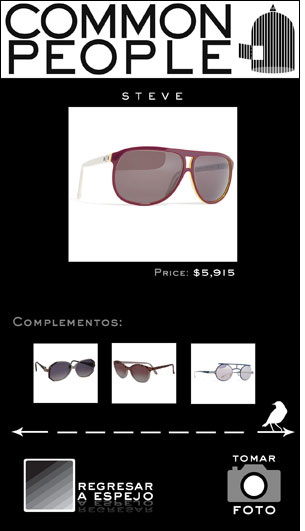Common People, an independent concept store that opened last month in Mexico City, is employing radio frequency identification technology to enhance an already uncommon customer experience, as well as improve the management of inventory.
“When we came up with the idea for a concept store, we knew we wanted to bring in not just the most interesting products, but also innovative technologies,” says Monika Feldman, who owns the store with her husband, Max. During the project’s planning phase, a friend of hers introduced her to Luca Pastorello, a partner at Digilogics S.A. de C.V., a Mexico-based label converter that provides RFID solutions to retail apparel, government services and logistics firms, as well businesses in other sectors. “I fell in love with the system,” she says. “It was amazing.”

The store sells a wide variety of goods, including books, music CDs, shoes, clothing, accessories and works of art. Each of the store’s approximately 10,000 items—many of which are unique or limited editions—is outfitted with a ShortDipole, Trap or Web paper RFID label from UPM Raflatac upon arriving at the retail site.
As goods arrive at the store, each item is entered into an inventory-management system. Common People is equipped with two RFID label printer-encoders from Zebra Technologies, which it uses to print and encode the RFID labels. The serial number encoded on each label’s embedded passive EPC Gen 2 ultrahigh-frequency (UHF) RFID tag is associated with the corresponding item in the inventory-management system. The tagged products are then moved out to the sales floor.
Common People installed an Impinj Speedway RFID reader in its dressing room, where a touch screen welcomes customers and displays an icon that, when clicked, will summon a sales associate. When a customer hangs up garments that he or she wants to try on in the dressing room, the RFID tags of those items are read and images of the clothing are displayed on the touch screen, under the label “Eggs in the Nest.” The screen then displays recommended accessories, and the shopper can click on any of them to obtain additional information, such as their manufacturer and cost. The customer can also send an e-mail containing images of the products to friends and relatives, along with the prices, store address and other information.
Another popular feature in the store is a sunglass display with a Speedway reader, an interactive touch screen and a camera mounted above a mirror. The sunglasses are all tagged. The system employs a motion sensor to determine when a customer picks up a pair of glasses, and can identify that particular pair thanks to an antenna designed to read only the tag on the item being tried on. The touch screen then displays a wealth of information about that specific pair of sunglasses. Shoppers can utilize the display fixture’s built-in camera and interactive screen to snap pictures of themselves trying on various glasses, and then e-mail them to friends and family members.
“Customers love these features,” Feldman states. “We track how often the system is used, and we find that customers come in and e-mail their friends images of sunglasses, and then the next time they come in, they do it again.”
Because the store opened with the RFID-enabled sunglass display and dressing room, Pastorello says, there is no way to determine to what extent they contribute to sales. However, he notes, similar systems installed by Digilogics at another location in Latin America resulted in a 2.5 percent sales increase.
Common People also uses the system to take inventory once a week, enabling the company to know when items require replenishment. The store uses a handheld RFID reader from Convergence Systems Limited (CSL), and the accurate, up-to-date inventory information is uploaded to a secure Web site, where suppliers can log in and view what is currently in stock.
“The store manager can take inventory very quickly with RFID, compared to what bar codes would require,” says Digilogics’ Pastorello. “The benefit is huge because it only requires one person to manage the entire store.”
An RFID reader, CSL’s model CS203, is located at the point of sale, so every time an item is sold, this information is also uploaded to the secure Web site. The store rents space to various fashion suppliers, so software installed by Digilogics tracks the items of each fashion supplier, comparing that information with what the store owes the supplier at the end of each month for goods sold. It then determines whether the supplier owes Common People payment for rent, or whether the retailer owes the supplier a balance for goods sold. The supplier then pays the store the balance of the rent due if an insufficient amount of goods were sold, or the store pays the supplier for the goods sold, minus the rent, if sales more than covered rental costs.

